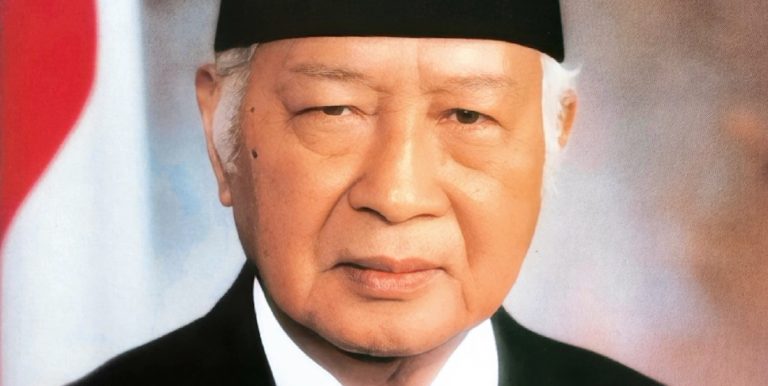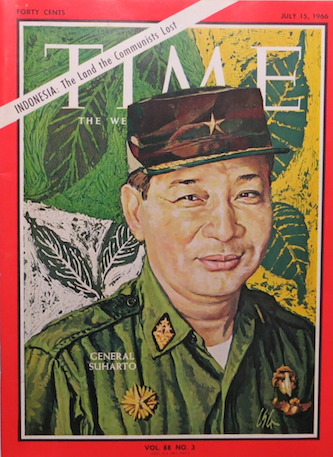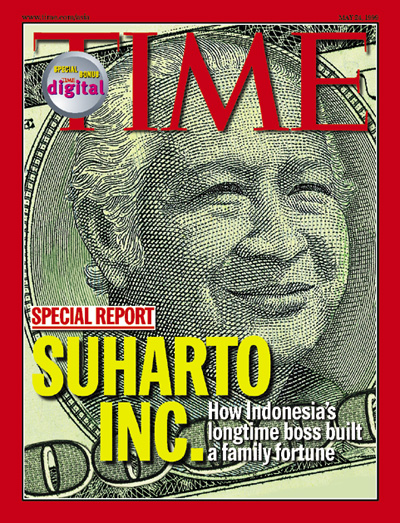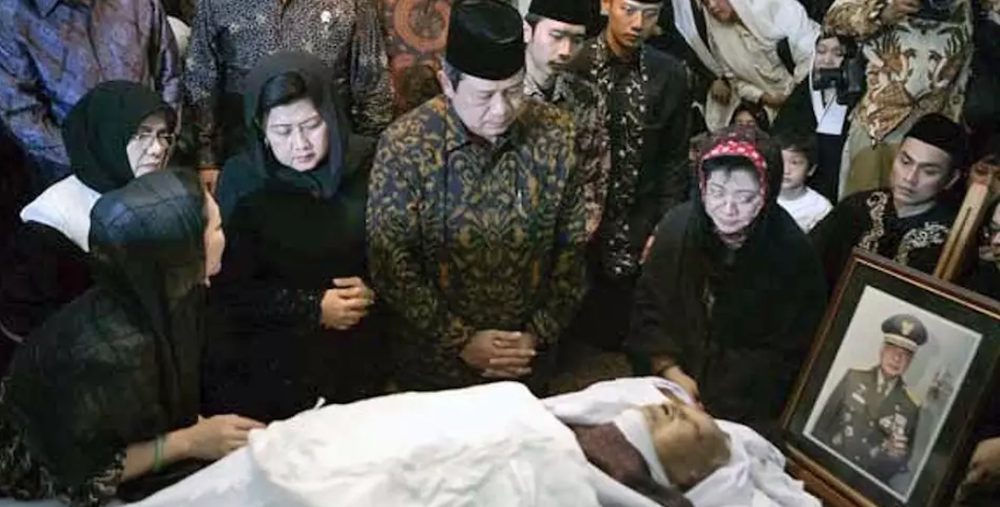
How 32 years of authoritarian rule left a nation scarred by genocide, corruption, and impunity
New York, N.Y. — Suharto, Indonesia’s second president, ruled with an iron fist for 32 years (1967-1998), leaving behind a legacy of systematic brutality, institutionalized corruption, and authoritarian repression that continues to haunt Indonesia today.
While some credit him with economic stability, his regime was built on a foundation of mass murder, fear, and exploitation. This is why his legacy must never be whitewashed—and why justice remains overdue.
The Bloody Foundation: Mass Murder as State Policy

Suharto’s rise to power began with one of the 20th century’s most devastating genocides.
The Indonesian mass killings of 1965–1966 saw an estimated 500,000 to 1 million people—mostly communists, ethnic Chinese, and intellectuals—systematically slaughtered across the archipelago.
Orchestrated under the pretext of crushing a communist coup, these massacres were a calculated purge to eliminate all opposition.
Suharto, then a military general, exploited the chaos to overthrow Sukarno, Indonesia’s founding father, and seize absolute control.
The complicity of Western powers, particularly the United States, cannot be ignored. Declassified CIA documents reveal that American intelligence agencies provided lists of communist sympathizers to Indonesian death squads.
The killings were not just tolerated—they were actively facilitated by nations fearing communism’s spread.
From his first day in power, Suharto’s hands were drenched in blood.
The East Timor Genocide: A Quarter-Century of Systematic Extermination
Perhaps no single crime better illustrates Suharto’s brutality than the Indonesian occupation of East Timor (1975–1999). What began as an invasion to prevent East Timorese independence became a prolonged campaign of genocide that claimed approximately 200,000 lives—nearly one-third of the territory’s population.
The occupation’s horrors were systematic and deliberate:
- Mass Executions and Forced Relocations: Indonesian forces herded civilians into “resettlement camps” where thousands died from starvation, disease, and execution. Entire villages were razed, their inhabitants murdered or forcibly relocated to barren areas without adequate food or shelter.
- The Santa Cruz Massacre (1991): Indonesian soldiers opened fire on peaceful protesters at a Dili cemetery, killing at least 270 people. The massacre, captured on film by foreign journalists, exposed the regime’s cruelty to international audiences but brought no meaningful consequences.
- Cultural Genocide: Beyond physical violence, Indonesia systematically destroyed Timorese culture. The Tetum language was banned, traditional customs suppressed, and Catholic churches—central to Timorese identity—were destroyed or converted.
- International Complicity: Western nations, including Australia and the United States, provided military equipment and diplomatic cover for the occupation. Arms sales continued even as evidence of genocide mounted, prioritizing geopolitical interests over human lives.
The East Timor genocide stands as one of the most underreported atrocities of the late 20th century, deliberately obscured by Indonesian propaganda and Western indifference.

The Kleptocracy: Development Built on Theft
Suharto’s “New Order” regime marketed itself as a modernizing force, and Indonesia did experience economic growth.
But this came at an enormous cost: the systematic looting of the nation’s resources by Suharto’s family and cronies.
His children became billionaires through state-backed monopolies, controlling everything from telecommunications to automotive imports.
Meanwhile, ordinary Indonesians struggled under a corrupt bureaucracy that demanded bribes for basic services.
The Transparency International Corruption Perceptions Index consistently ranked Indonesia among the world’s most corrupt nations under Suharto’s rule.
His Golkar Party rigged elections, silenced dissent, and transformed Indonesia into a police state where opposition was crushed and criticism was treason.
The Machinery of Terror: Silencing a Nation
Suharto’s regime perfected the art of state terrorism. The Petrus killings (1983–1985)—state-sponsored murders of alleged criminals—left thousands of bodies in the streets as a warning against dissent. The message was clear: challenge the regime, and death awaits.
Student activists, journalists, and critics routinely “disappeared” or were imprisoned without trial. Torture was systematic, used not just for interrogation but as a tool of psychological warfare against the population.
Like the Trump administration today, the regime’s propaganda machine worked overtime to justify these atrocities, portraying every act of brutality as necessary for “stability” and “development.”
The Fall—And the Failure of Justice
The 1997 Asian financial crisis shattered Indonesia’s economy, exposing the hollowness of Suharto’s economic miracle. Mass protests, led by students and joined by millions of ordinary Indonesians, forced his resignation in May 1998.
Justice never came. Despite overwhelming evidence of embezzling
billions of dollars and orchestrating mass murder, Suharto died in
2008 without facing trial. His family retained much of their wealth,
and many of his cronies remained influential in Indonesian politics.
Today, some Indonesians nostalgically remember his era as “stable.” But stability built on mass graves and sustained by terror is not progress—it’s an abomination.
The Unfinished Reckoning
Indonesia must confront Suharto’s crimes. Truth commissions, declassified documents, and survivor testimonies are essential not just for historical accuracy but for national healing. The Indonesian people deserve to know the full extent of their suffering under his rule.
The international community, too, must acknowledge its complicity in propping up his regime. Western governments that sold weapons, provided intelligence, and offered diplomatic cover share responsibility for the hundreds of thousands who died.
Until this reckoning occurs, Suharto’s victims remain unavenged, his crimes unpunished, and his legacy unresolved. History must not be allowed to forget—or forgive—what he did to Indonesia and its people.

Blood and Billions: Devastating Legacy of Indonesia’s Dictator Suharto (July 10, 2025)
Summary for Audio
Suharto ruled Indonesia for 32 years through systematic brutality, including the 1965-66 mass killings of up to one million people and the East Timor genocide that claimed 200,000 lives. His kleptocratic regime enriched his family while impoverishing the nation. Despite overwhelming evidence of crimes against humanity, he died unpunished in 2008. This article examines why his legacy must never be whitewashed and why justice remains overdue.